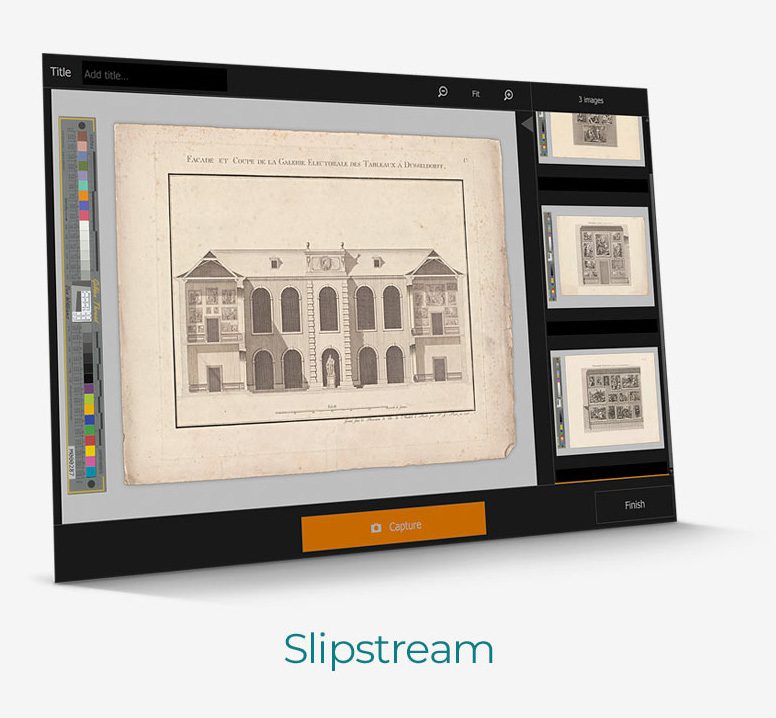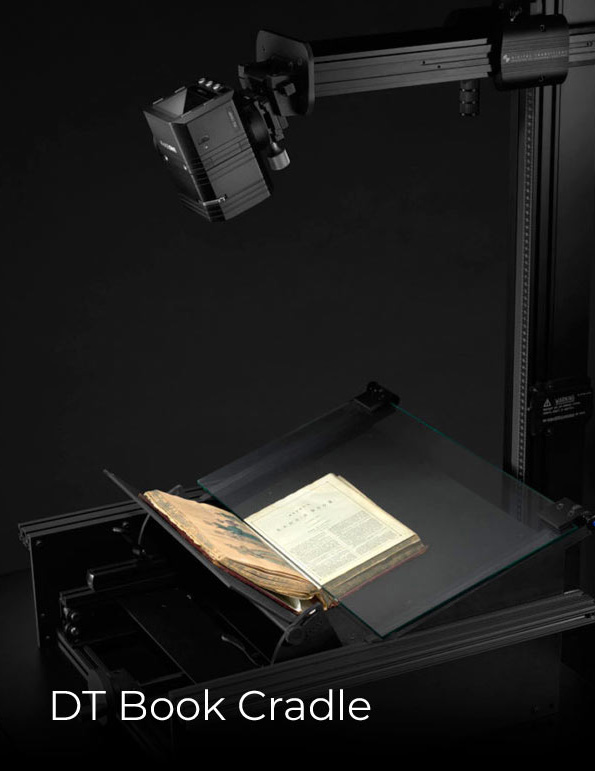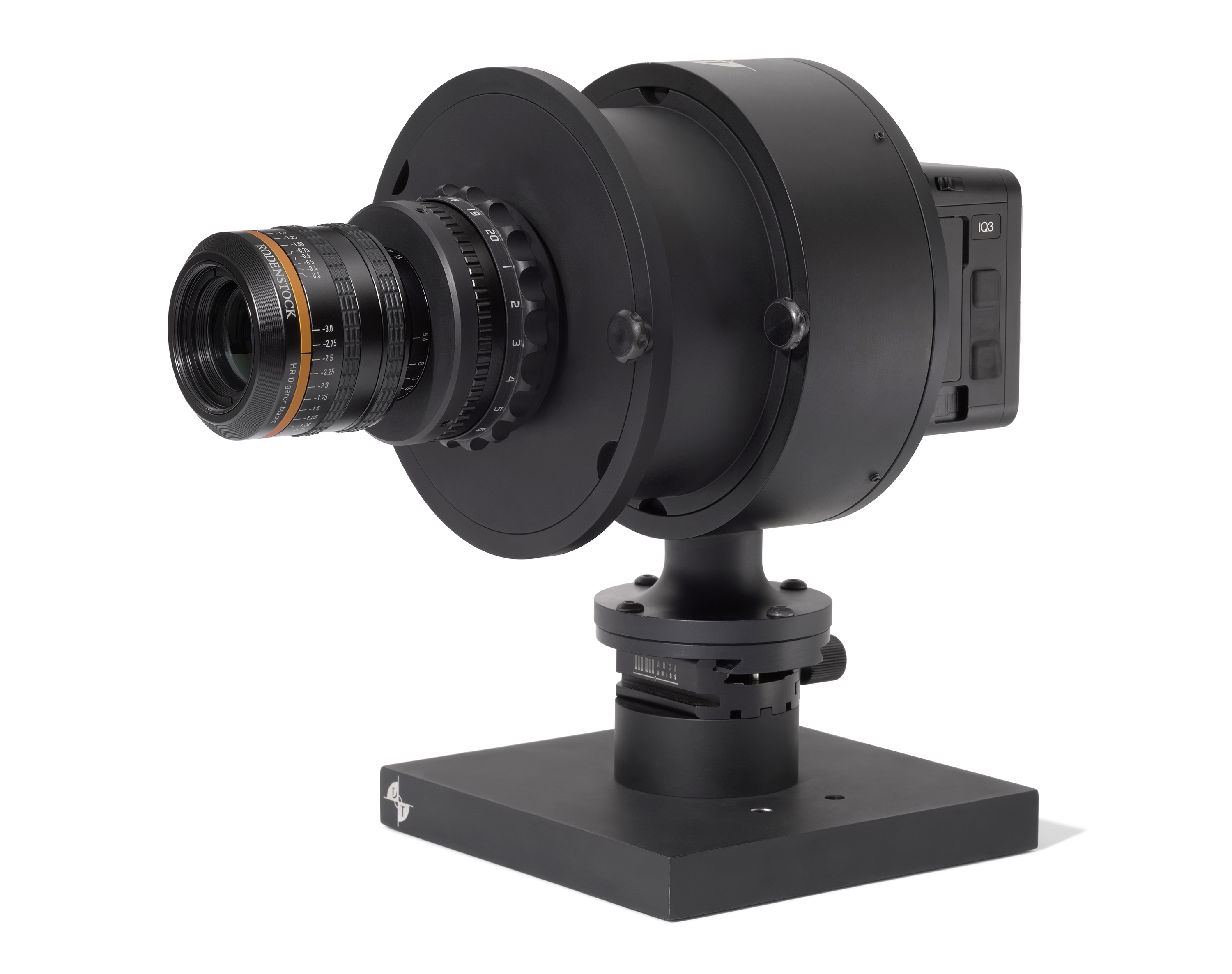Digital Transitions is already known for providing the absolute best digitization systems for museums, libraries, and archives in the industry. This year, our never-ending quest for better quality, faster workflow, and improved ease-of-use has lead us to develop our latest group of product upgrades. At this year’s ALA (American Library Association) show in New Orleans, we’ll be debuting powerful improvements to our full product line.
Slipstream
While the depth of features and control that DT’s digitization systems provide give our customers unparalleled control and flexibility over image quality, the numerous options, sliders, and buttons can overwhelm and intimidate less experienced operators. With this in mind, we’re excited to announce “Slipstream,” a radically simple user interface that provides FADGI 4-Star image compliance with the push of a button. Even operators with no previous experience or training can use Slipstream. Just tap ‘Capture’ to capture. Left your hand in the frame? No problem. Tap the image and select ‘Retake.’ Simple.

Same Preservation-Grade Image Quality
Under the hood, the captured images are still sharp, color-accurate, true 16-bit files, giving you the same industry-best image quality, with none of the complexity. FADGI-4 compliance has never been this easy.
Preservation-grade conservation-friendly FADGI 4 digitization doesn’t have to be complicated. Our solutions make digitization faster, safer, and accessible to operators without advanced training or experience. FADGI 4 has never been this easy.
TruePPI
DT systems fully integrate the capture head, work station, and peripherals. Our Capture One CH software is the command center that controls all these components seamlessly, providing users of any experience level the ability to automatically implement an exact PPI, even when the object’s surface height changes.
TruePPI is an innovative solution that makes imaging materials whose thickness varies—such as mounted objects, bound materials that can not be placed under glass, and paintings— as easy as clicking a button. Camera focus and camera position are automatically and precisely handled by our system, eliminating the time and effort of calculating this yourself.
Book Cradle
All DT systems are designed with material safety as their top concern. In fact, many of our systems were first designed on-spec for institutions like The Getty, The Library of Congress, and The National Archives Record Administration because their conservation team wouldn’t sign off on the safety of any other system. This has given us a unique insight into creating systems that meet rigorous guidelines for the safety and conservation of bound material.

Our newest product, the DT Book Cradle, is the culmination of this experience. Compatible with the DT Atom, DT Versa, DT Element, and all previous Digital Transitions work stations, the DT Book Cradle provides conservation-friendly, preservation-grade, fast and efficient digitization of A3 bound material (up to 17” x 12” per page).
Its unique design incorporates a tilt-inward mount for the camera to provide ergonomic digitization without increasing the footprint of the system, as well as multiple options for the opening angle of the bound material being digitized, giving you the ability to prioritize and balance between speed and the safety of that material.
A book held in a reading room is typically open to ~100°—the most common digitization angle. But if the material is safe to open to 180°, both pages can be imaged with a single camera, thereby doubling the speed of your digitization process. Or, for especially rare or delicate material, DT provides the option of digitizing at 80°, significantly reducing the stress on bindings.
Working with bound material inevitably requires some amount of contact, whether with your hand, a cradle, a table surface, or even neighboring pages. Depending on the nature and purpose of the material being digitized, the DT Book Cradle provides two forms of contact, giving you full control over material handling and workflow.
Full-Flush Contact
Full-Flush Contact eliminates the page curvature, wrinkles, and other topographic features of the page, creating a flat, distortion-free image. This method compresses the pages below the one being digitized as well as the book binding.
Minimal-possible Contact
Minimal-possible Contact prevents the page from excessively fanning away from the pages below, but does not compress the binding, putting even less pressure on the page than when the book is closed. Only DT Systems have the precision to provide glass-contact digitization with such a gentle touch that it qualifies as “Minimal-possible contact.”
Phase One iXG Feature Update 2
With Feature Update 2 the iXG can reach a magnification of 1:1 which provides a 5500ppi scan with a capture area of 54mm x 41mm. With the update the iXG also returns to the previous PPI when the camera is restarted, reducing setup time when turning the system on for the day.

New high-magnification lens for the DT RCam
The new 105HR lens for the DT RCam allows up to 5x magnification for imaging of subject matter as small as one micron with the field of view that only a Full Frame 645 sensor can provide. For example, when imaging 1-micron subject matter the DT RCam with 105HR lens still provides an 11mm x 8mm of field of view, many times larger than a standard microscope camera.
DT’s workstations already provided the fastest and highest-quality digitization solutions in the industry. These newest innovations make FADGI 4-Star compliance faster, easier, and more precise than ever before.
Stop by booth #1949 at ALA 2018 to visit with us and learn more, or contact our team to set up an in-person demo.

